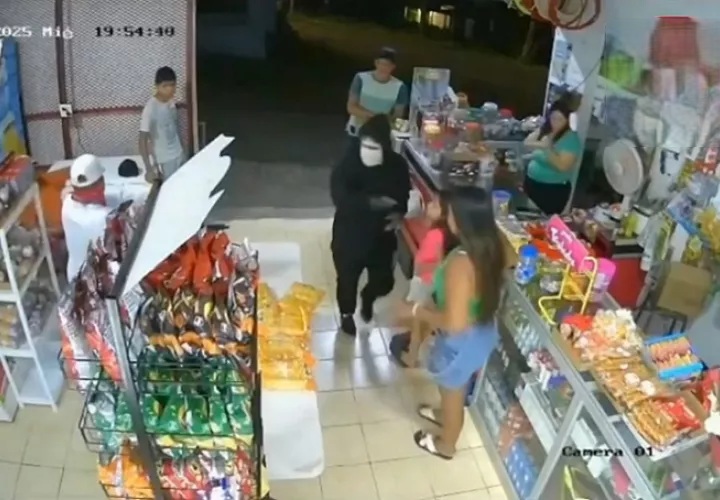The Prophets of Fear: Cults Operate in the Heart of the Ngäbe Buglé Region
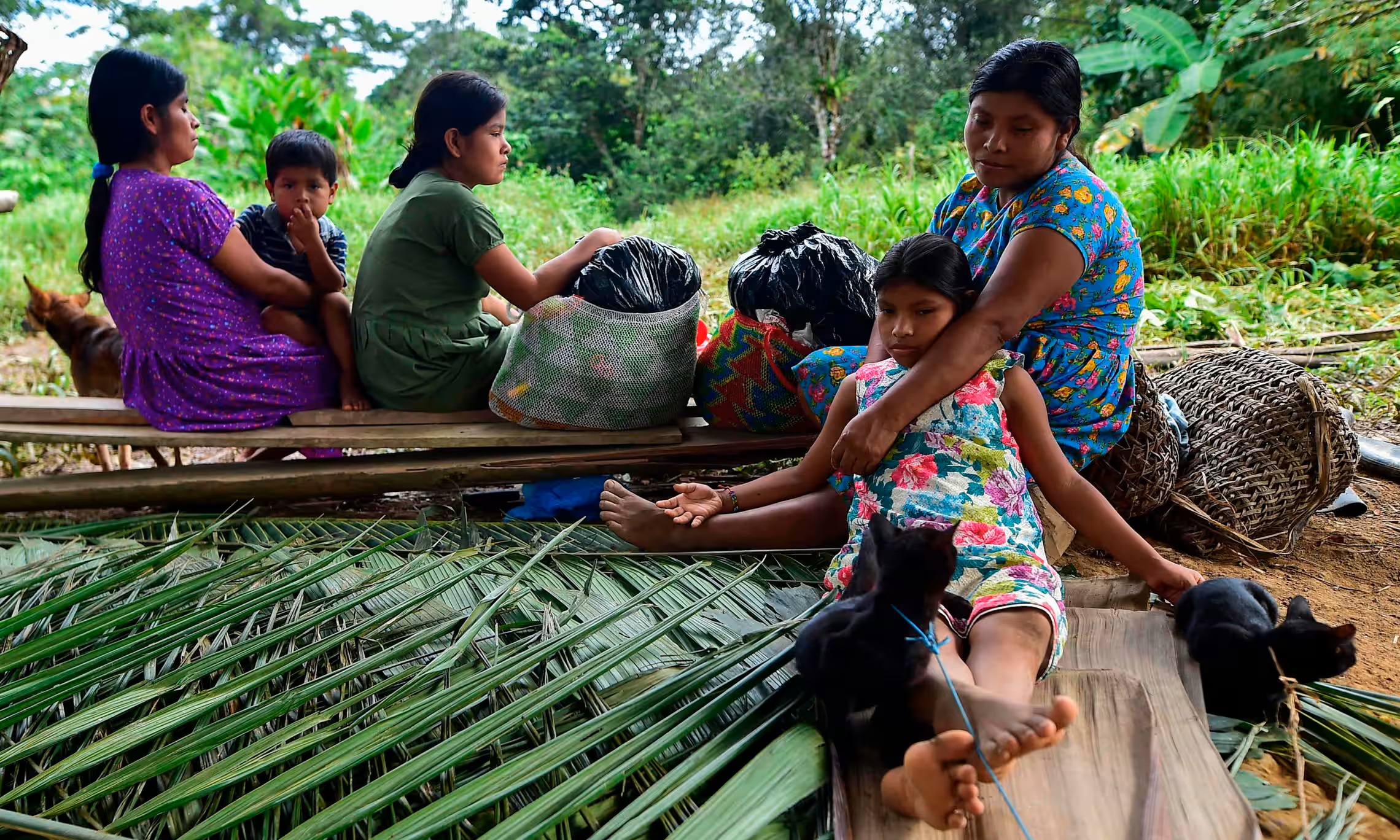
The mountains of the Ngäbe Buglé region hold secrets that, when they emerge, shake the country. Isolated by geography and forgotten by the State, several indigenous communities have been the scene of one of the darkest phenomena of recent years: the proliferation of religious sects. The Terrón case of 2020 below, shook the country.
How Panamanian Villagers were left at the Mercy of a Murderous Sect
In 2020 when a woman and six children were ritualistically killed in the indigenous community of Alto Terrón Panama, the official response was complicated by the absence of police and health services. At the Iglesia de Dios church deep in the rainforest of Panama’s Caribbean coast, a number of unsettling objects attest to the horrific events which took place here. A black and red accordion stands among the overturned pews, children’s belongings are strewn across the floor, and a Bible – open at the Book of Revelation – rests on the wooden pulpit. Below it, seven crosses have been etched into the green moss of the floor. When police arrived at the indigenous village of Alto Terrón on 14 January, they found 15 villagers tied up next to the carcass of a sacrificed goat. They had been beaten with machetes and Bibles, and some had their tongues burned with hot embers in attempt to “rid them of the devil”. In a shallow grave nearby lay the bodies of seven other victims, including Bellin Flores, 33 – who was pregnant – and her five children.
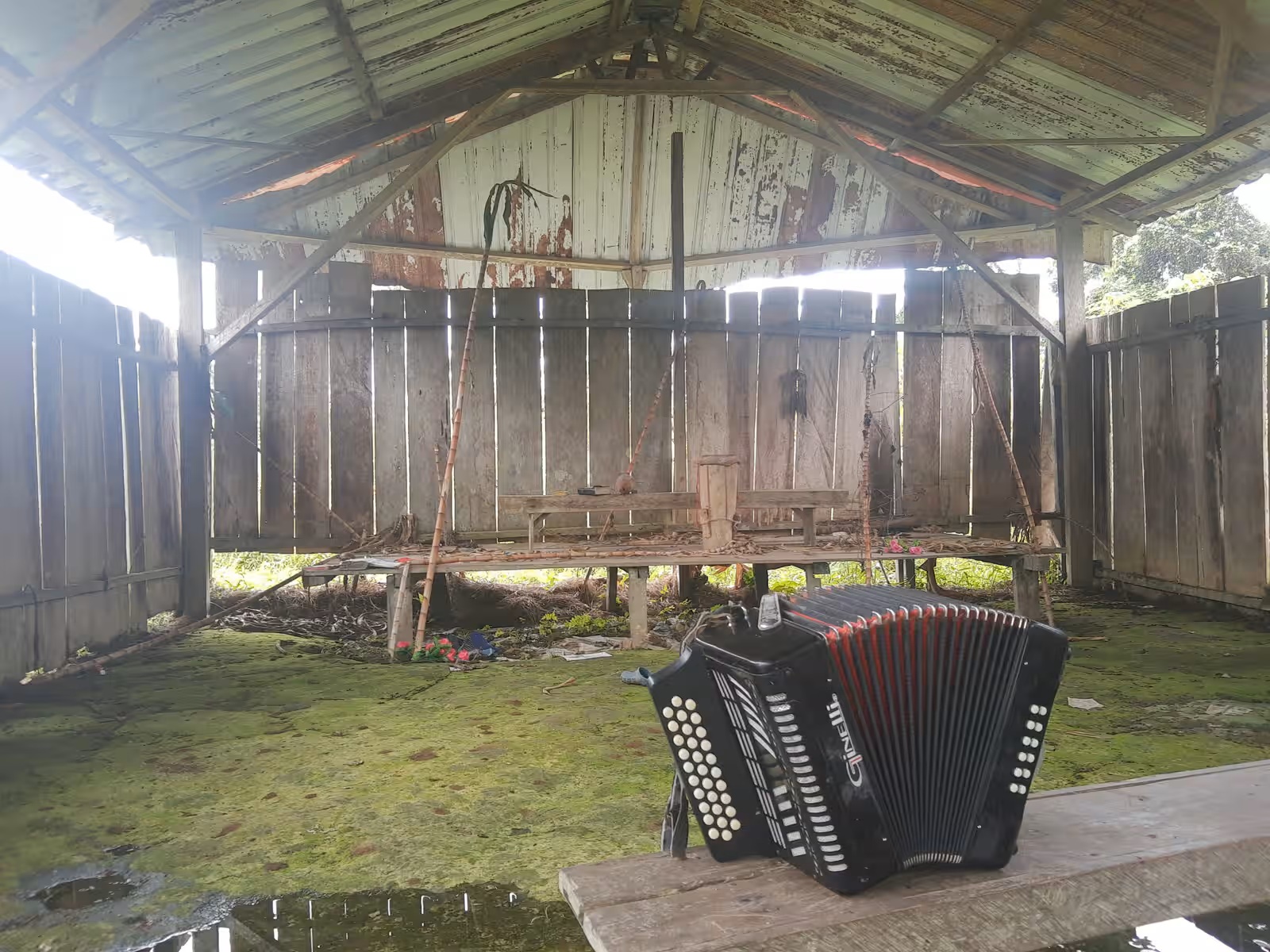
An accordion is on a bench inside the improvised temple where a pregnant woman, five of her children and a neighbor were killed by cult members in the remote hamlet of Alto Terrón, Panama
“They came for my family armed with wire and machetes and they rounded them up like chickens,” Flores’s husband, Josué González pictured below, told reporters. His six-year-old son, also pictured below, had managed to escape and warn González, who was working in a nearby village. “I alerted the authorities, but they didn’t have the capacity to enter the area that evening,” he said, hugging the boy close.
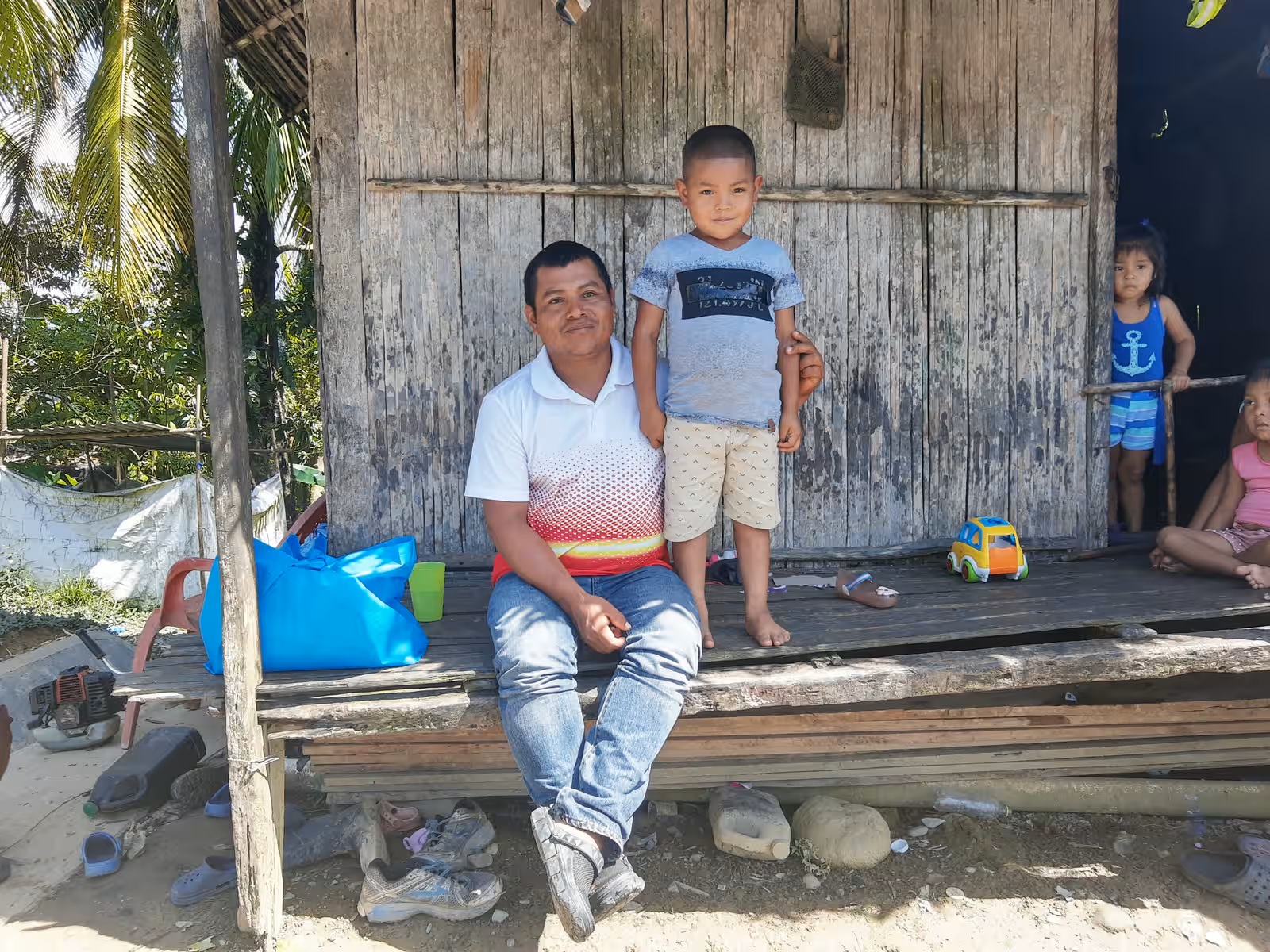
By the time the officers reached the village, the violent exorcism ritual at the Nueva Luz de Dios – New Light of God – sect was well into its fourth day. Local villagers, members of the Ngäbe-Buglé indigenous group, are adamant that – were it not for a long history of state abandonment – lives could have been saved. Panama had the highest GDP per capita in Latin America at the time; its extreme poverty rate is just 6.6%, but in the Ngäbe-Buglé comarca – semi-autonomous indigenous region – that figure is 96%. In Alto Terrón, there was no police presence, or healthcare facilities. The sect was led by Flores’s father, Mario Plátano González, 60, who started performing rites in the church, a few hundred meters from the grass clearing that marked the center of the village. Locals describe Plátano González as a domineering character who kept his family distant from the rest of the village. “He was very machista, he wanted to be the only one in charge, and the family, were the same” says Josué González.
“They kicked the priests out of the church and said that they were the only ones who could talk to God.” Evangelical Christianity has grown rapidly in Latin America in recent decades, often in the wake of aggressive missionary work, but the inhabitants of Alto Terrón are Catholic and say that the sect had no ties to foreign religious groups. According to the police’s investigating office, Rafael Baloyes, one of Plátano’s sons claimed to have had a “divine revelation” that the group needed to perform an exorcism on the people of Alto Terrón and, “if they showed no evidence that the evil had left their body then they should end their lives”. “I could hear them singing and praying from my house,” said González. “The noises they made were frightening, but I never imagined they would go this far.” When the rituals turned violent, the response by other villagers and the Panamanian authorities was complicated by an absence of local police and health services – and the village’s isolation.
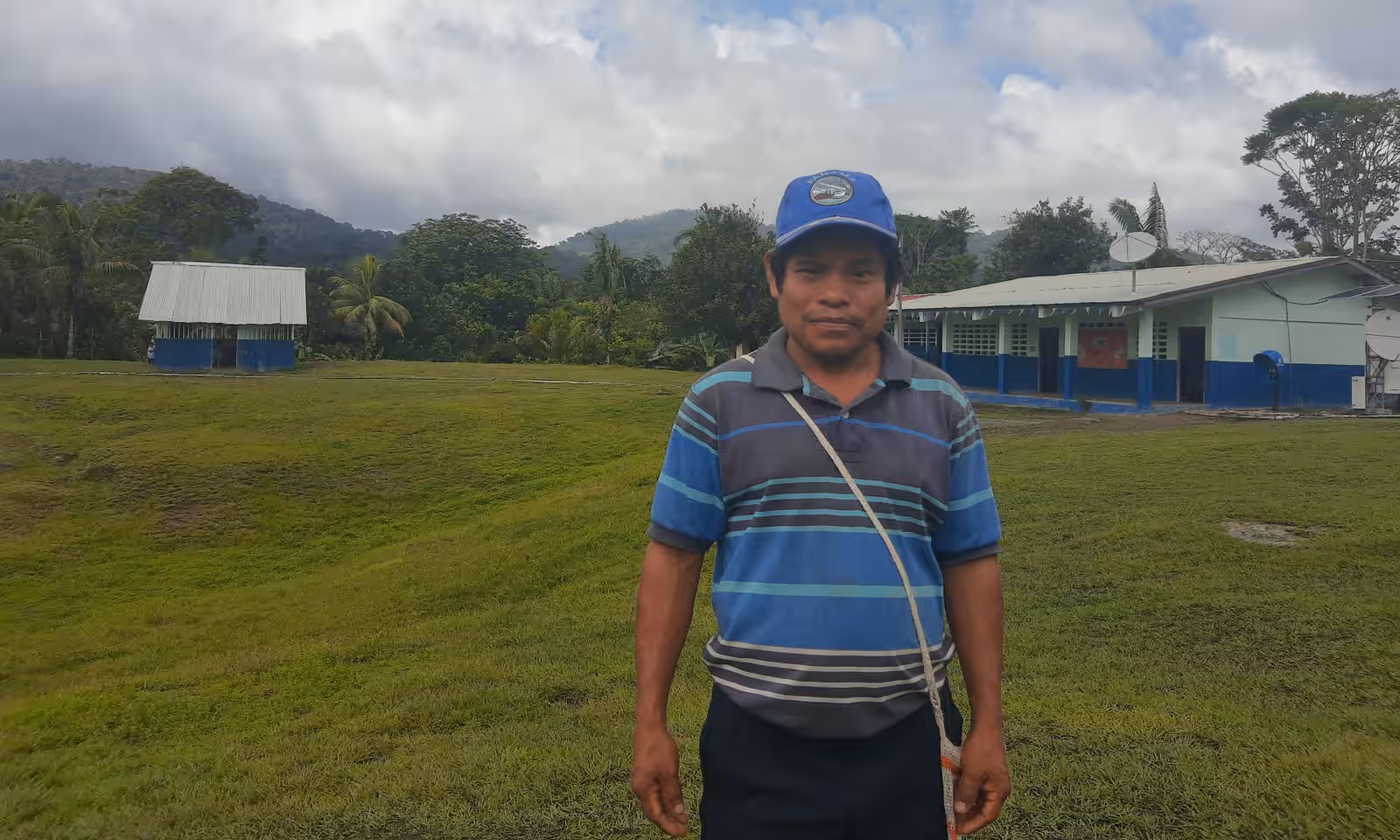
The first injured victims of the ceremony approached the village’s cacique, or leader, Evangelisto Santo pictured above, on 11 January, but he had to wait till the next day to escort them to the nearest town, Río Luis – an hour’s hike down a steep, muddy track, and then a two-hour canoe trip away. From there, they had a further two-and-a-half-hour drive to a hospital in the city of Santiago. During Santo’s absence the cult, rounded up its next victims. A 21-year-old member of the group, calling himself Mesías Set – after the biblical character Seth – ordered the killings. Afterwards, five soldiers were billeted in one of the village’s basic wooden houses, and a gleaming new satellite dish, providing free WiFi, stood next to the overcrowded school house, which catered to 80 pupils between the ages of four and 13. But villagers feared such investments would be temporary. “In this country there has to be a tragedy in order for the state to respond,” said Jhonny Valdez, a trainee teacher. “Children had to die for the community to get internet, but the pupils still lack computers and hardware in order to be able to compete with kids in the cities for school places.” Santo says more long-term support is required. “We don’t want the soldiers to be here today and gone tomorrow,” he said. “There’s a lack of security and we need a permanent presence, but we also need health and education.” As the owner of one of the village’s few cellphones, Santo, anxiously read the Ministry of Health bulletin on the day the first coronavirus case was confirmed in Santiago.
Alto Terrón is less than 150 kilometers (as the crow flies) from the Miami-style skyline of Panama City, but the capital has soaked up the vast majority of national infrastructure spending. Until the coronavirus struck, the mayor’s main proposal was a $120m project to create a beach in the capital using imported sand. In December 2018 the government launched an “integrated development plan for indigenous people” backed by $80 million financing from the World Bank but inhabitants of Alto Terrón insist they have not seen the benefits. In the days following the massacre, Panama’s president at the time, Laurentino Cortizo, described his “total sadness” at the events. “When you start to see the ages of the victims it makes you reflect. Things of this nature must not happen,” he said. The government has said it will prioritize 100 communities, including Alto Terrón and other indigenous communities, under the Plan Colmena, an integrated program to expand health, education and telecommunications services to poor regions. A new road was built from San Luis to the Caribbean coast and a major power transmission project passing through the comarca is at the tender stage. Such developments are viewed with suspicion.
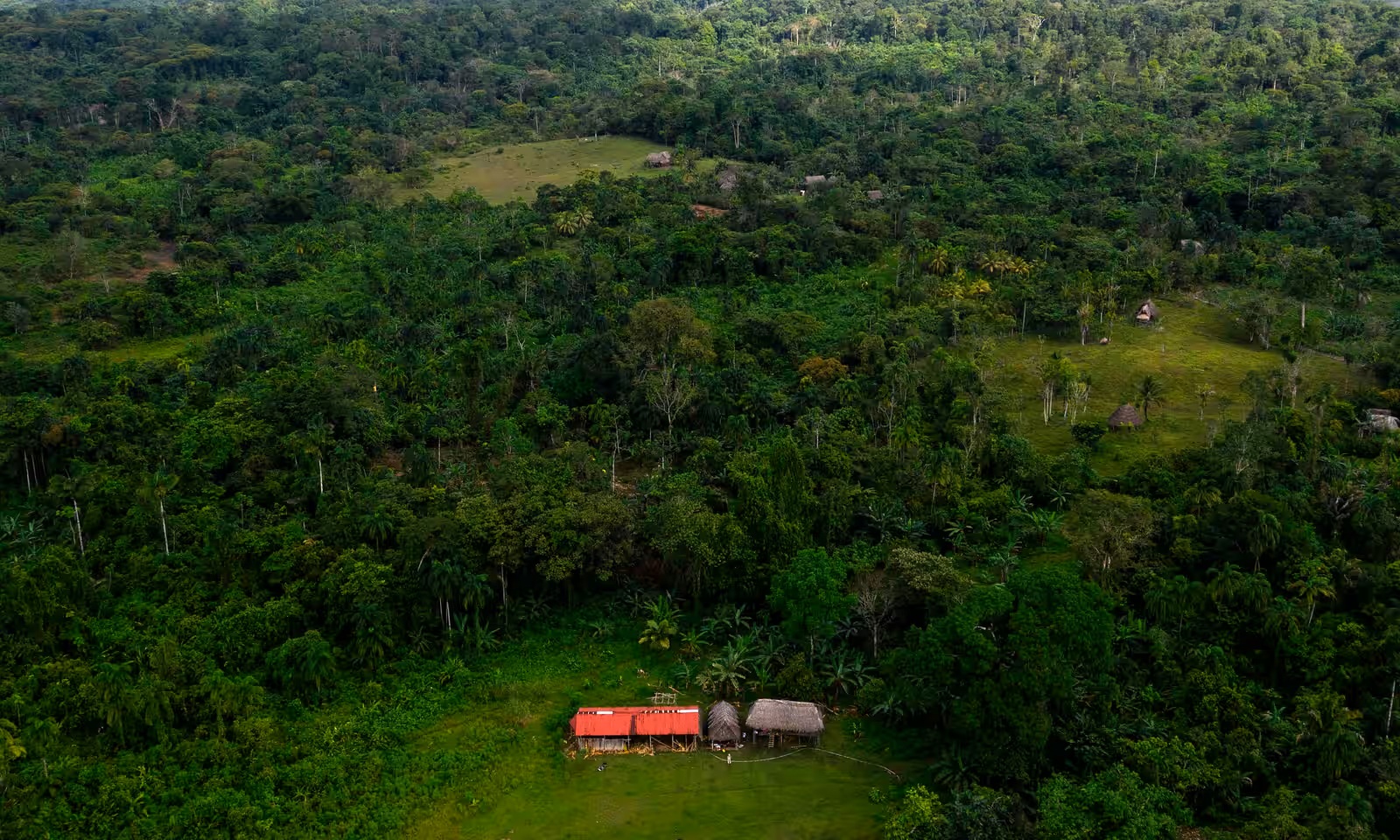
Aerial view of an improvised church where the massacre occurred, in Alto Terrón.
“Since the new road was built, we have seen many foreigners arriving, looking for land to develop tourism projects,” said Santo. “They come looking for the natural beauty that no longer exists in their own country. In Bocas del Toro it’s just gringos, there are no indigenous left,” he added, referring to the popular tourist destination immediately to the north of the comarca. Panama has been unable, or unwilling, to find an adequate balance between indigenous land rights and state development, according to Francisco Herrera, a professor in anthropology at the University of Panama. “The comarca system is clientelist,” he says “The state uses its investments to benefit the powerful economic groups through construction contracts for roads and schools. “The Ngäbe-Buglé has lived for nearly 7,000 years in these territories, but the state has created social demands that cannot be met by what they produce. We have created an idea of poverty in which the only way to escape is to leave the area.” Plátano, “Mesías Set” and eight other members of the sect were put in police custody in Changuinola, Bocas del Toro. The villagers of Alto Terrón avoid walking the footpath that runs by the Iglesia de Dios church and the painful memories it evokes. But the reminders of the failure of the state are impossible to ignore.



